I have three USPS flat rate boxes in my living room filled with 50 pounds of it, so now is as good a time as any to talk about bonsai soil. Yes, I get my soil in the mail.
There’s a lot you learn on the fly when you get into houseplants from a point of total ignorance. Nobody tells you what soil is, just that it should be “free draining,” a term as maddeningly vague to me as “bright, indirect light.” Is soil the same thing as dirt? Is it this peat I keep hearing about? I had no clue. So let’s talk about soil!
Like Captain Planet, soil is comprised of five elements:
Air
Water
Inorganic minerals: rock, sand, silt
Living things: bacteria, fungi, all sorts of critters
Dead and decaying organic matter: leaf litter, bark chips, compost
Incidentally, this is why potting soils sold at garden centers are called soilless media. They’ve been sterilized to kill any organisms in the mix, and they don’t contain water. The term substrate is a catch-all for anything you grow something in, be it fresh dirt, bagged potting mix, or styrofoam.
Those first two elements, air and water, make up roughly 50% of the average soil, which is bananas to think about, as if we’re all bouncing on ground made of banana bread. Yet both are key for trees. Plants breathe air and drink water through their roots. Those roots need space to grow. Root growth requires porous soils—especially tree roots.
Organic matter in soil provides nutrients to the tree. A fallen leaf has everything you need in it to grow a new one. There’s more to it than that—symbiotic organisms, aeration, ion exchanges—but the current trend in bonsai soils is to exclude living and dead organic matter altogether in favor of 100% inorganic substrates, with a steady supply of fertilizer to simulate the role of organic matter in soils.
That leaves us with rocks and minerals, wherein we find a fascinating physics problem: what’s the best size, shape, and porosity of an inorganic substrate to maximize a tree’s exposure to air and water? The smaller the particles, the more water a mix can hold. If they’re different sizes, you’ll get saturation gradients that can drown roots. And the particles should encourage the growth of fine, delicate roots rather than thick, sturdy ones. Those tiny feeders are the roots that handle the breathing, drinking, and nutrient uptake for the tree.
These are questions for people with labs or gardens or at least a second bedroom; I have neither the space nor the inclination to experiment with soils. I am grateful to come into bonsai after this empirical work has been done, and to live in a time when I can buy substrates from guys on Facebook who take the trouble to source, sift, and mix equal volumes of these particles, measured to 3/16th of an inch, please:
Pumice: A soft, crumbly stone with more air pockets than a wheel of Gruyere
Lava rock: A volcanic rock, also full of air pockets, but stronger than pumice, so it keeps the mix from compacting
Akadama: Japanese clay that’s baked into brittle particles, so it encourages fine root growth as it decomposes back into clay
The resulting mix looks nothing like soil. It’s more like the discs you see below, faithfully reproduced in Lego’s bonsai set.
In bonsai, “free draining” means you can water a pot all day; the water will never pool up and saturate the soil. There’s still water in the drained substrate, but plenty of air. On the flipside, this means watering more often. Several times a day in the heat of summer. In turn, each watering brings a new dose of fertilizer to the roots. Bonsai is strenuous on a tree. Steady doses of fertilizer act as performance enhancing drugs. All natural, I swear.
At first I was skeptical to bonsai soil. I couldn’t believe it held enough water and I didn’t want to race to my trees three times a day to check if they needed more. Yet experience over this year has shown me the light, and I come to you with the fervor of the converted. It’s not that bonsai mixes are best for every plant or even every tree. Growing a tree in a pot, in an environment it’s not used to, is nothing like growing it in the ground. The rules change. Assumptions of what’s “natural” get challenged.
Originally I bought blends on Etsy that contained an even mix of organic and inorganic components; they felt more soil-like, closer to my murky ideal of what it means to grow plants. My red maple is due for a repot this spring and I’m considering buying more of that mix just for it; the tree seems to love the extra moisture. I weaned myself off organic blends with my figs by combining equal parts bonsai mix and sphagnum moss. The figs loved this blend, but larger pots held too much moisture, and when I eventually repotted the trees I could see drenched pockets of moss where no roots could grow. So I’ve been converting my figs to my 100% inorganic mix. I’ll know more in a few months when their roots are better established.
This osmanthus is the first tree that I planted in straight bonsai mix, back in mid-March. Here it is seven months later.
Look at that trunk thickness! The tree had two strong flushes of growth and is already building nice bark. Roots are crawling out the bottom. This is the tree that convinced me to go inorganic with the rest of my bonsai. I should have them all converted by next summer.
The plant shop where I got this osmanthus had a new supply this December, and the trees were larger than what I bought; they were closer to the height of the tree above. However they had a fraction of the foliage. I was amazed at the sparse branches and wimpy trunks. My friend Matt saw me inspecting them. “Not as nice as yours,” he said.
Tree reading
The quirky economics of the Christmas tree business. [Ambrook Research]
Where does the world’s cardboard come from? [New York Times Magazine]

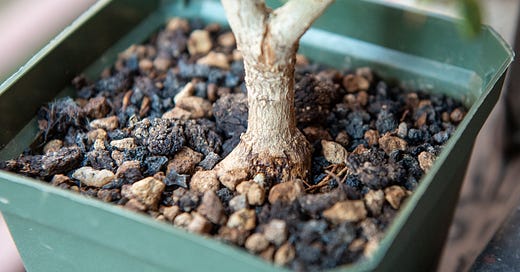


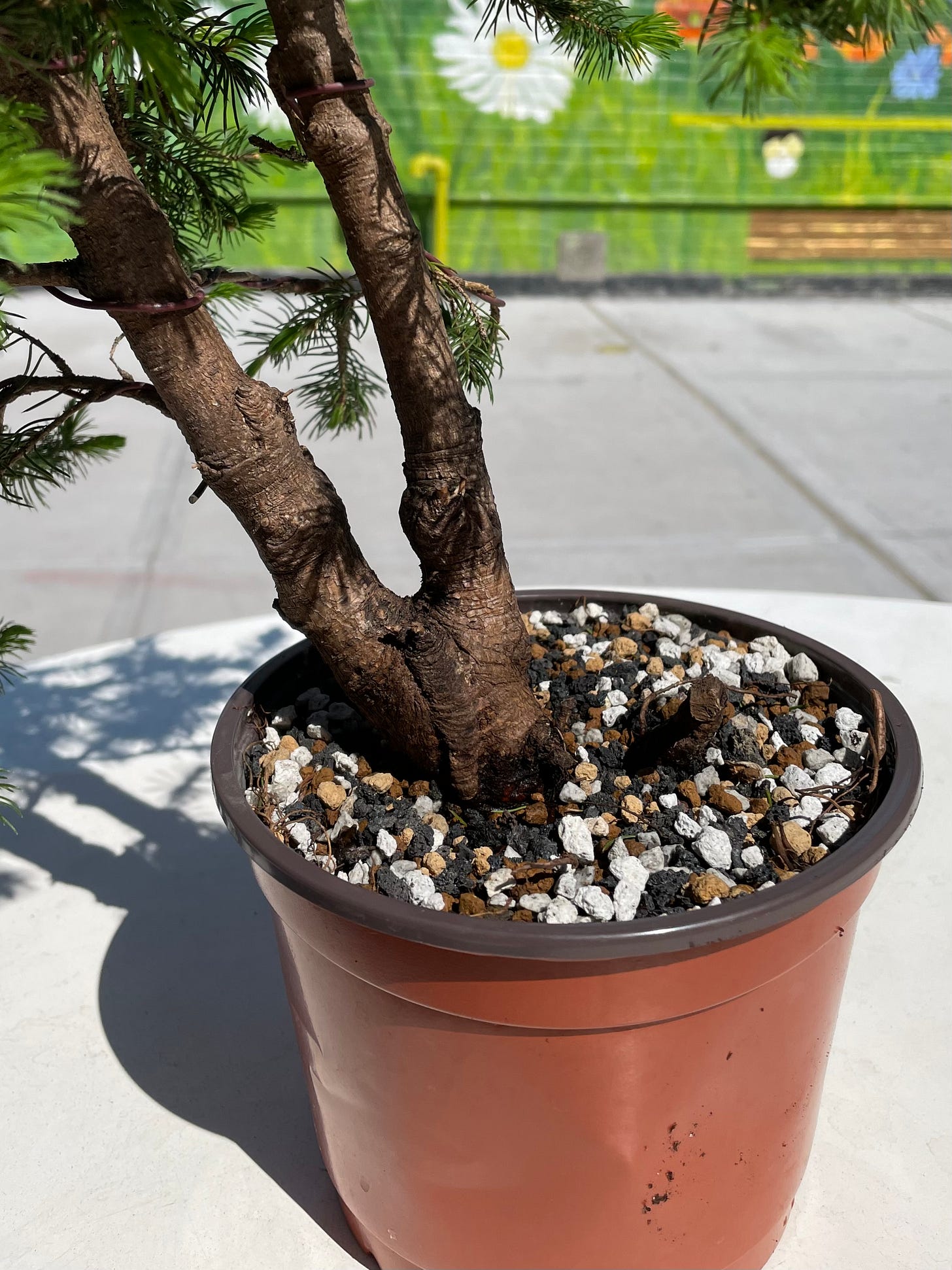
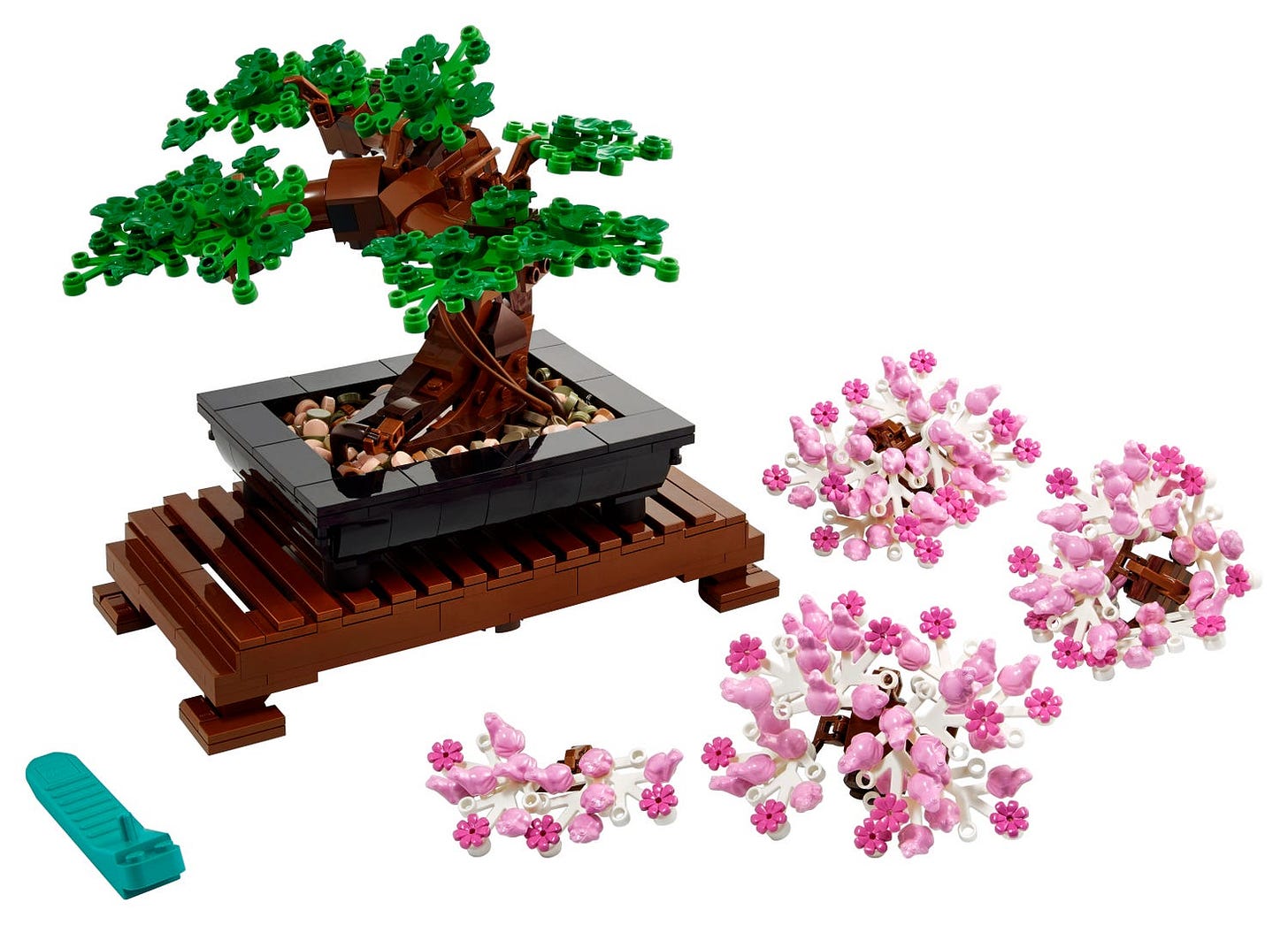
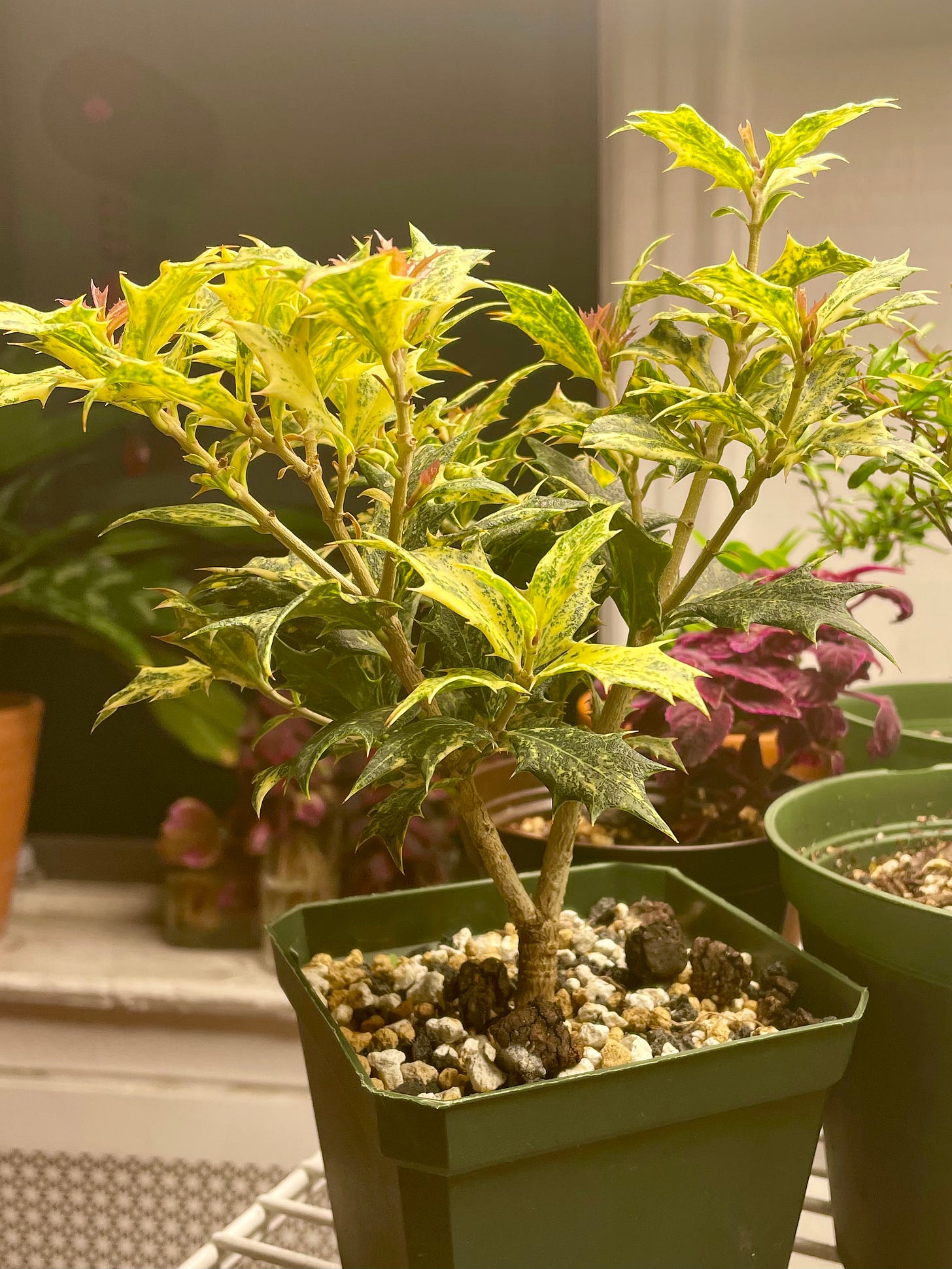
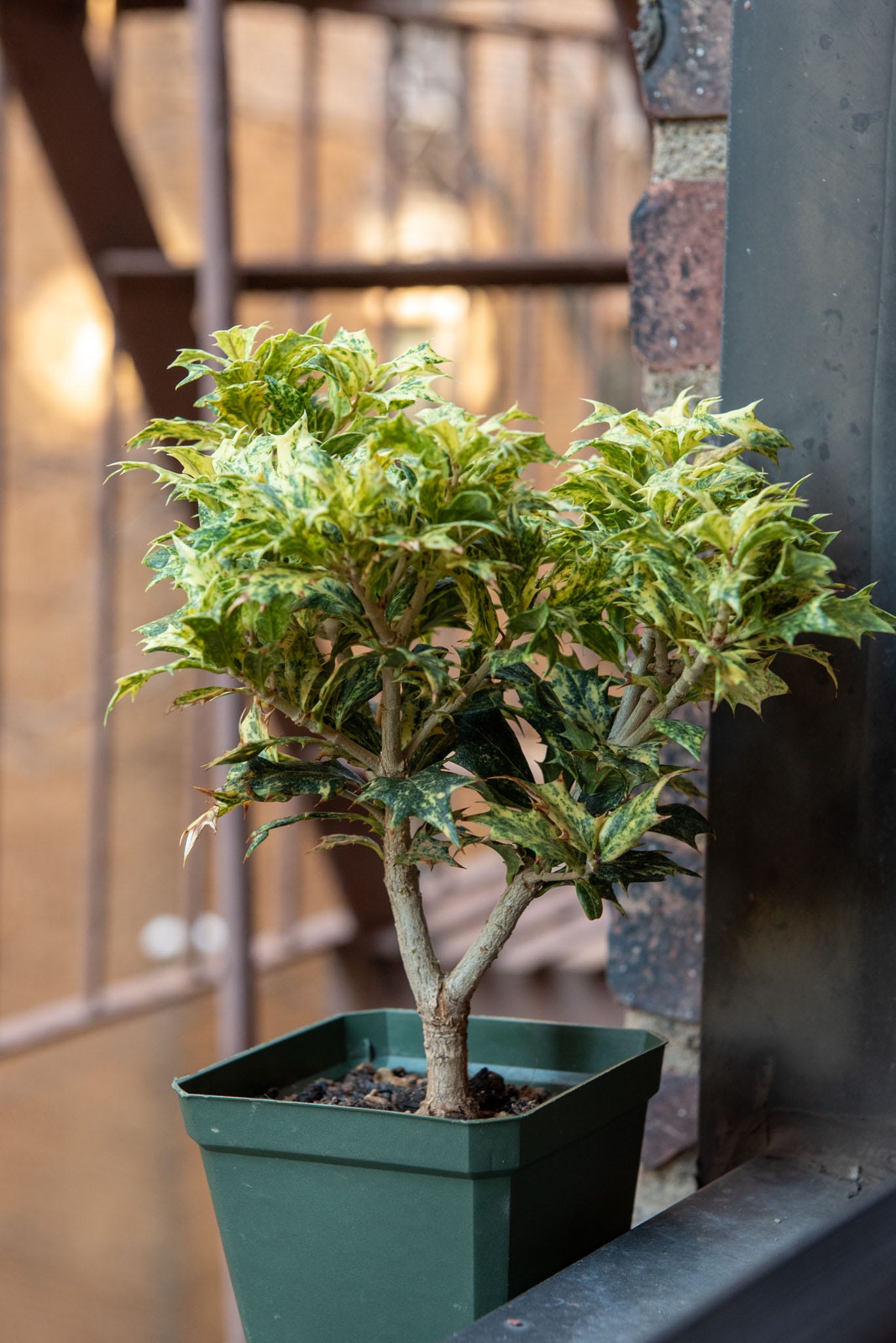
Learned an inordinate amount of knew knowledge. Amazing. Thank you!
Happy new year Max!